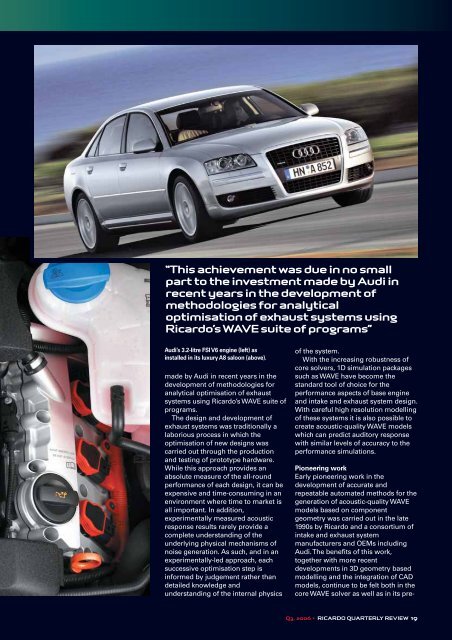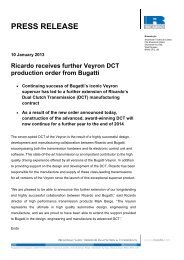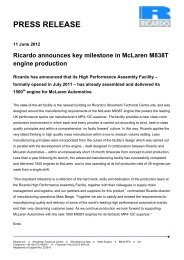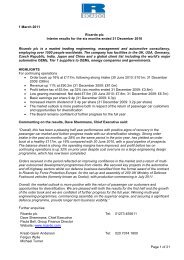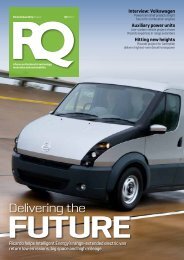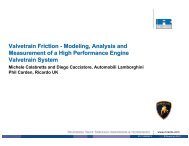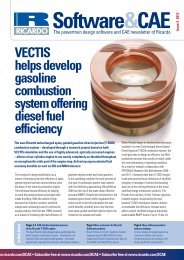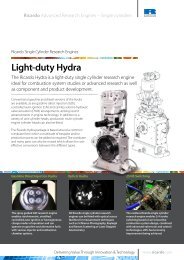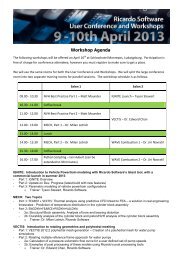The hottest - Ricardo
The hottest - Ricardo
The hottest - Ricardo
You also want an ePaper? Increase the reach of your titles
YUMPU automatically turns print PDFs into web optimized ePapers that Google loves.
“This achievement was due in no small<br />
part to the investment made by Audi in<br />
recent years in the development of<br />
methodologies for analytical<br />
optimisation of exhaust systems using<br />
<strong>Ricardo</strong>’s WAVE suite of programs”<br />
Audi’s 3.2-litre FSI V6 engine (left) as<br />
installed in its luxury A8 saloon (above).<br />
made by Audi in recent years in the<br />
development of methodologies for<br />
analytical optimisation of exhaust<br />
systems using <strong>Ricardo</strong>’s WAVE suite of<br />
programs.<br />
<strong>The</strong> design and development of<br />
exhaust systems was traditionally a<br />
laborious process in which the<br />
optimisation of new designs was<br />
carried out through the production<br />
and testing of prototype hardware.<br />
While this approach provides an<br />
absolute measure of the all-round<br />
performance of each design, it can be<br />
expensive and time-consuming in an<br />
environment where time to market is<br />
all important. In addition,<br />
experimentally measured acoustic<br />
response results rarely provide a<br />
complete understanding of the<br />
underlying physical mechanisms of<br />
noise generation. As such, and in an<br />
experimentally-led approach, each<br />
successive optimisation step is<br />
informed by judgement rather than<br />
detailed knowledge and<br />
understanding of the internal physics<br />
of the system.<br />
With the increasing robustness of<br />
core solvers, 1D simulation packages<br />
such as WAVE have become the<br />
standard tool of choice for the<br />
performance aspects of base engine<br />
and intake and exhaust system design.<br />
With careful high resolution modelling<br />
of these systems it is also possible to<br />
create acoustic-quality WAVE models<br />
which can predict auditory response<br />
with similar levels of accuracy to the<br />
performance simulations.<br />
Pioneering work<br />
Early pioneering work in the<br />
development of accurate and<br />
repeatable automated methods for the<br />
generation of acoustic-quality WAVE<br />
models based on component<br />
geometry was carried out in the late<br />
1990s by <strong>Ricardo</strong> and a consortium of<br />
intake and exhaust system<br />
manufacturers and OEMs including<br />
Audi. <strong>The</strong> benefits of this work,<br />
together with more recent<br />
developments in 3D geometry based<br />
modelling and the integration of CAD<br />
models, continue to be felt both in the<br />
core WAVE solver as well as in its pre-<br />
Q3, 2006 • RICARDO QUARTERLY REVIEW 19


